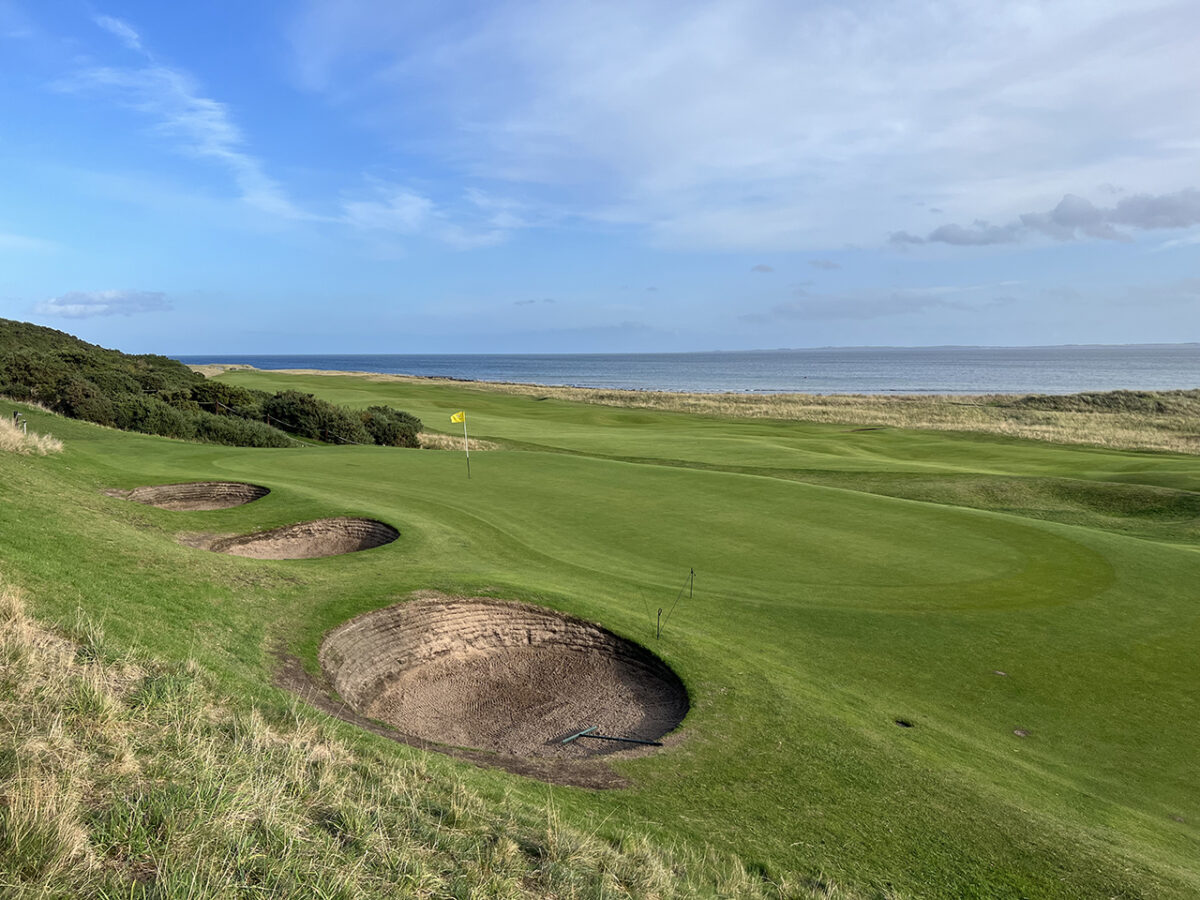Where to begin?
That is not a rhetorical question. When laying out a bucket-list golf trip to Scotland, it’s a very serious query, part of a series of such questions that will follow you around the country. Where to begin? Which course next? Toughest of all: Which courses can I bear to skip?
Headed to St. Andrews? There’s a lot more on tap than the famed Old Course, 30 times the site of the British Open – ahem, Open Championship, thank you very much. Will you play the New Course, which seems a misnomer, seeing how it was built by Old Tom Morris in 1895? How about the Jubilee? The Castle, which having opened outside town in 2008 is the newest of the seven courses managed by the St. Andrews Links Trust? Maybe sample a handful of the other layouts not far from the Home of Golf?
Headed into the Highlands for a dream round at Royal Dornoch? Everyone on other courses, on the way and on social media will tell you that you can’t skip nearby Brora (I didn’t) or Tain or Golspie (I missed both, but I already am planning to return). Scouting a classic links trip to Aberdeen? You can’t miss classic links such as Royal Aberdeen, or Murcar Links or Cruden Bay or a handful of others. The options are lined up along the coast. All the coasts of Scotland, actually.

Headed east? You’ll be told not to miss the courses to the west. Looking north? Don’t miss those gems to the south. Whichever point of the compass you choose and whatever address you plug into Google Maps, there will be dozens of opportunity costs – all those suggestions are correct, even if they create a totally unmanageable itinerary for a traveling golfer on a weeklong holiday.
- Top 50 classic courses in Great Britain and Ireland
- Top 50 modern courses in Great Britain and Ireland
Weeks after my recent trip, when playing with a group of Golfweek’s Best course raters in California, I barely could finish a sentence about where I played before the questions poured in: Did you play this one, and what about that one? We all process the world through the lenses of our own experiences, and that’s especially true when judging the courses somebody else is, or is not, playing.

Such was the quandary when I started planning this trip to Scotland. I was lucky, because I knew where I would begin. American course designer Tom Doak is building a new course at Castle Stuart near Inverness, which is being rebranded as Cabot Highlands after its recent acquisition by Canadian company Cabot. I would begin there to hear Doak discuss his plans as well as to sample the original course at the resort.
But from there? I had options. Too many options. The names of famous Scottish links courses roll on and on, and it would take months to see even half of what I had in mind. I had only 12 days on the ground, so I enlisted the help of course booking provider Golfbreaks and the local experts at VisitScotland.com to help set up a trip that would venture high into the Highlands before swinging back down the coast, east to Aberdeen and eventually into St. Andrews.
Scotland, of course, is where the game as we know it was invented, and the best of it is all about links golf in particular. Firm, fast and sometimes almost entirely natural – I coveted the links experience. Of the 550 or so total golf courses in Scotland, fewer than 90 might be classified as true links, depending on one’s given definition – there is great debate among academics and clubhouse drunks about what constitutes a proper links. On this trip I was lucky enough to experience 11 examples. Each was distinctive, and don’t dare think of links golf as some uniform game, because it is the definitive opposite of that. The conditions might be similar, but each layout shines on its own, each bouncy shot promising something unexpected.

I played courses that are famed worldwide, and several that are less known outside Scotland. I played in sunshine and rain, wind and calm. I played well, and I played poorly. The only constants were the courses, the terrain and coastlines flashing through my exhausted head each night in whatever accommodations I had scheduled. The trip included planes, trains, buses, shuttles and a blue Skoda SUV – “Keep left, keep left, keep left,” I had to remind myself at the start of each drive on skinny, winding roads, because I couldn’t bear the thought of missing my next round of golf due to something so mundane as a car crash.
There were a lot of miles, a lot of different beds, a lot of nerves in the car. So many good courses, too many bad swings. And it was all perfect.
[afflinkbutton text=”Book your golf trip to Scotland today” link=”https://www.golfbreaks.com/en-us/vacations/scotland/#overview”]

